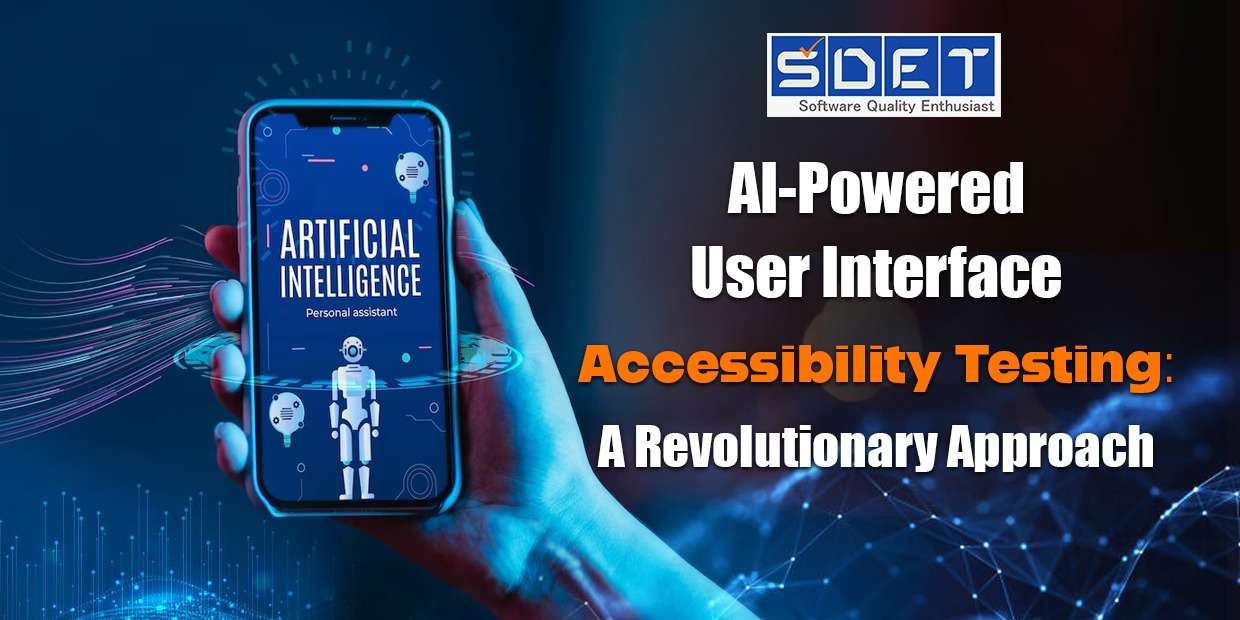
AI-Powered User Interface Accessibility Testing: A Revolutionary Approach
In today’s digital age, where technology is the backbone of almost every facet of our lives, ensuring that digital platforms are accessible to everyone is paramount. Accessibility in user interfaces (UI) is not just a good practice; it’s a legal and ethical necessity. With an increasing emphasis on inclusivity, AI-based accessibility testing emerges as a revolutionary approach to guaranteeing a seamless experience for all users.
The Imperative of Accessibility Testing
Accessibility testing focuses on ensuring that websites, applications, and software are usable by individuals with disabilities, including those with visual, auditory, cognitive, or motor impairments. It’s not just about meeting compliance standards but also about creating a more inclusive digital landscape.
Traditional accessibility testing methods involve manual assessments and automated tools that check for adherence to established guidelines such as the wcag(WCAG). While these methods have been valuable, they often fall short in keeping up with the dynamic nature of modern web applications and their continuous updates.
The Rise of AI in Accessibility Testing
Enter AI-based accessibility testing, a game-changer in the world of digital accessibility. Leveraging the power of artificial intelligence, this approach brings a level of sophistication and efficiency that was previously unimaginable.
- Automated Test Script Generation: AI-based tools excel in generating automated test scripts for accessibility testing. They can analyze the structure and content of web pages, identify potential accessibility issues, and generate test scripts tailored to the specific elements on a page. This not only accelerates the testing process but also ensures a more comprehensive examination of the UI.
- Dynamic Analysis of UI Components: Traditional testing tools often struggle with the dynamic nature of modern web applications, where UI components change dynamically based on user interactions. AI-based testing tools, equipped with machine learning algorithms, can adapt to these dynamic changes, ensuring a more accurate and thorough evaluation of accessibility throughout the user journey.
- Intelligent Issue Identification: AI goes beyond rule-based evaluations. It can intelligently identify potential accessibility issues by simulating user interactions and interpreting the UI from a user’s perspective. This nuanced understanding allows AI-based tools to uncover issues that might be overlooked by traditional testing methods.
- Context-Aware Suggestions: One of the standout features of AI-based accessibility testing is its ability to provide context-aware suggestions for improvement. By understanding the context in which UI elements are presented, these tools offer more relevant and actionable recommendations, helping developers make informed decisions to enhance accessibility.
- Continuous Learning and Adaptation: The dynamic nature of the digital landscape demands continuous learning. AI-based accessibility testing tools are designed to adapt and evolve. They learn from each testing cycle, improving their ability to identify and address accessibility issues over time. This adaptability is crucial for keeping up with the ever-changing nature of web development.
Challenges and Considerations
While AI-based accessibility testing brings immense value, it’s essential to acknowledge and address certain challenges.
- Interpretation and Context Sensitivity: AI, while powerful, may not always capture the full context of a user’s experience. Human judgment remains crucial in interpreting certain nuances and ensuring that accessibility improvements align with the overall user experience goals.
- Comprehensive Test Coverage: AI-based tools should be complemented with other testing methods to ensure comprehensive test coverage. While they excel in many areas, a holistic approach to accessibility testing involves combining AI insights with manual assessments and user testing.
- Evolving Standards and Guidelines: As accessibility standards and guidelines evolve, AI-based tools need to stay abreast of these changes. Regular updates and integration with the latest accessibility standards are essential to maintaining the efficacy of these tools.
The Future Landscape of Accessibility Testing:
The integration of AI in accessibility testing marks a significant stride towards a more inclusive digital future. As technology advances, we can expect further innovations in this space.
- Integration with DevOps Practices: The agile and continuous nature of DevOps practices aligns seamlessly with the capabilities of AI-based accessibility testing. We can anticipate increased integration of these tools into DevOps pipelines, enabling developers to identify and address accessibility issues early in the development lifecycle.
- Enhanced Personalization: AI’s ability to understand user context can lead to more personalized accessibility recommendations. As these tools evolve, they may provide tailored suggestions based on the specific needs and preferences of individual users.
- Cross-Platform Compatibility: The future holds the promise of AI-based accessibility testing tools that seamlessly adapt to various platforms and technologies. Whether it’s web applications, mobile apps, or emerging technologies, AI will play a crucial role in ensuring accessibility across diverse digital landscapes.
Conclusion: A More Inclusive Digital Tomorrow
AI-based accessibility testing represents a groundbreaking shift in how we approach digital accessibility. By combining the efficiency of automation with the intelligence of artificial intelligence, we pave the way for a more inclusive digital landscape. The challenges and considerations are acknowledged, but the potential for positive transformation far outweighs the hurdles.
As developers, businesses, and technology enthusiasts, embracing AI in accessibility testing isn’t just a technological evolution; it’s a commitment to creating digital spaces where everyone, regardless of ability, can navigate, interact, and engage seamlessly. The future of accessibility testing is AI-driven, and it holds the key to a more accessible and inclusive digital tomorrow.
